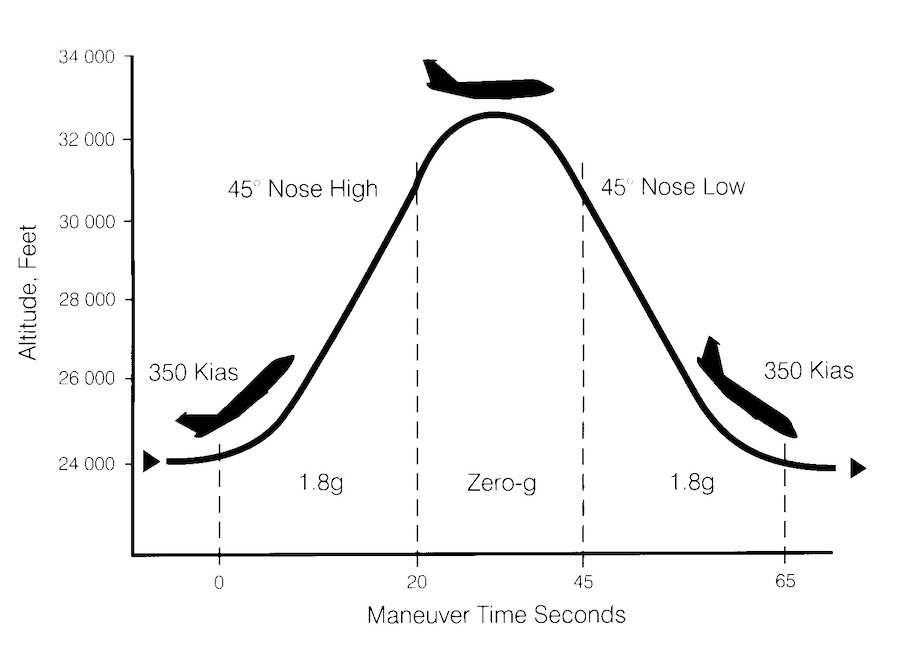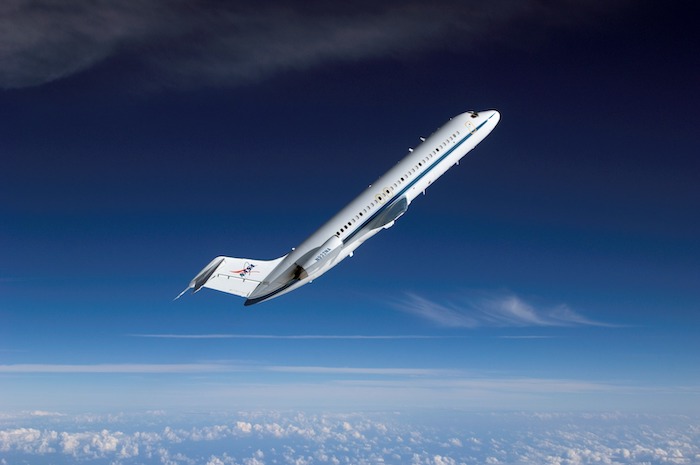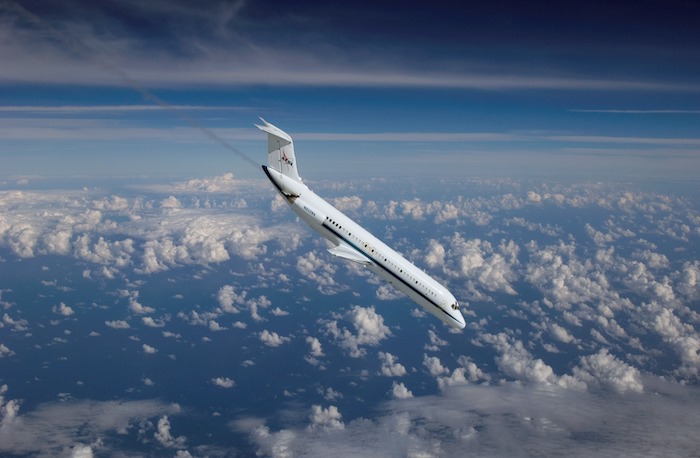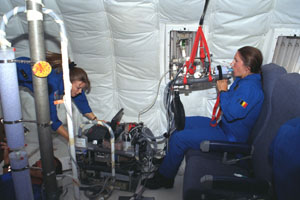Reduced-Gravity Aircraft

A Reduced-Gravity Aircraft provides a special opportunity to perform experiments in microgravity. The plane flies in a parabolic trajectory, resulting in 2-g during the pullout, and 0-g for a period of 25-30 seconds over the top. The plane is used for microgravity experiments, as well as for astronaut training. A typical week of flying on NASA's KC-135 or C-9 airplanes consisted of 40-60 parabolas a day, four flights per week. To those who have experienced the thrill of floating, the Reduced-Gravity Aircraft is fondly known as the "Vomit Comet."


The UCSD Physiology/NASA lab has conducted a variety of experiments on NASA's KC-135 and C-9 aircraft, and with ZeroG Corp. whom NASA has recently been contracting for research flights.
Many of our flights have investigated the deposition of small aerosol particles in the lung. These studies looked at a variety of aspects of aerosol deposition and dispersion in the lung and have spanned the years from 1995 to 2012.
 In the first flights the subject breathed continuously through a mouthpiece connected to a valve system from which was breathed either room air or aerosol-laden air. The aerosol concentration and flow rate were measured by a photometer and pneumotachograph (flow meter). Four different aerosol sizes, from 0.5 micron to 3 micron, were used, and a comparison was made looking at how much deposition occurred as a function of gravity level for each particle size.
In the first flights the subject breathed continuously through a mouthpiece connected to a valve system from which was breathed either room air or aerosol-laden air. The aerosol concentration and flow rate were measured by a photometer and pneumotachograph (flow meter). Four different aerosol sizes, from 0.5 micron to 3 micron, were used, and a comparison was made looking at how much deposition occurred as a function of gravity level for each particle size.
For the next set of flights, the subject inhaled a full breath from residual volume (out as far as he or she can go) all the way up to total lung capacity (up as far as he or she can go). A bolus (small volume) of aerosol was inserted by the valve system into the breathed air at different times in the inspiration (one bolus per test). The subject then exhaled back out to residual volume, and the deposition was seen to change depending on how early in the inspiration the aerosol was introduced. The data from the flights will be compared to data taken on each subject on the ground, to see how aerosol deposition changes in 0-g and 2-g compared to 1-g.
Next we used 1 µm-diameter particles as a means to study convective mixing mechanisms in the alveolar region of the lung. Because particles with a diameter of 1 µm have very low intrinsic motions, they act as a non-diffusing gas and they may be used to trace convective and bulk processes. In this particular experiment, we studied the complex mixing induced by the reversal of the flow during a breathing cycle. The breathing maneuver was similar to that done in the previous experiment, with the change that a breath-hold period was added at total lung capacity and the expiration was done with maximal effort. During the breath-hold, small flow reversals were induced by a mechanically driven piston. The reversibility of flow in the lung was studied in this manner.
